![]()
![]()
![]()
Use LEFT and RIGHT arrow keys to navigate between flashcards;
Use UP and DOWN arrow keys to flip the card;
H to show hint;
A reads text to speech;
71 Cards in this Set
- Front
- Back
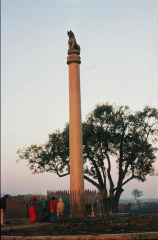
|
Column, Lauriya Nandangargh Maureen Period, 3rd century BCE, 30 ft high |
|
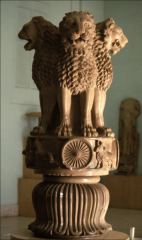
|
Lion Capital from a Column, Sarnath, India, Mauryan period, mid-third century BCE, sandstone |
|

|
Yaksha Kuberaand Yakshi Chanda,detail from east gate of BharhutStupa,India, 2nd century BCE, purple sandstone |
|
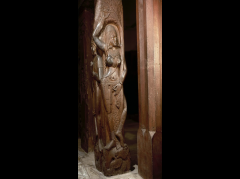
|
Yaksha Kuberaand Yakshi Chanda,detail from east gate of BharhutStupa,India, 2nd century BCE, purple sandstone |
|

|
Yakshibeneath a mango tree, SanchiStupa, India, ca. 150-50 BCE |
|
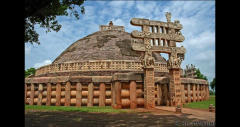
|
Great Stupa,Sanchi,India, 1st century BCE to 1st century CE, 120’ in diameter, gateways 35’ high |
|
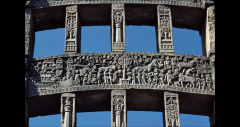
|
Siddhartha’sGreat Departure from Home and Family, detail from crossbar, east gate, Great Stupa,Sanchi, 1stcentury BCE to 1st century CE |
|
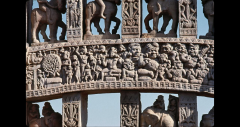
|
Siddhartha’sDefeat of Mara’sArmy, detail from crossbar, north gate, Great Stupa,Sanchi, 1stcentury BCE to 1st century CE |
|
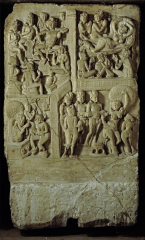
|
Birth of Shakyamuni,stupacasing, Amaravati,Andhra Pradesh, India, 2nd century CE |
|
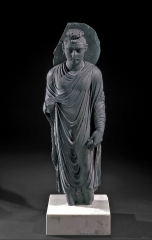
|
A Buddha, presumably Shakyamuni,in an abhayamudra pose with ushnisha,Takht-I-Bahi,Pakistan, third century, schist stone |
|
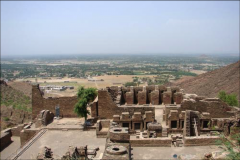
|
Takht-I-bahi complex, Pakistan, begun ca. 2nd century |
|

|
A bodhisattva, possibly Shakyamunior Avalokiteshvara?,Pakistan, third to fourth century, schist stoneurnaushnishaabhaya mudra |
|
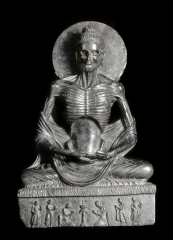
|
Siddhartha as an ascetic, Pakistan, thirdto fourth century |
|
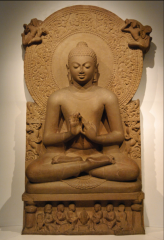
|
Buddha, possibly Shakyamuni,Sarnath,Uttar Pradesh, India, Gupta Period, ca. 465-485 |
|
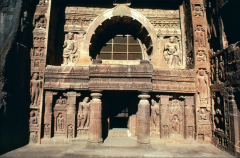
|
Cave 19 at Ajanta, Maharashtra Province,India, late fifth century |
|
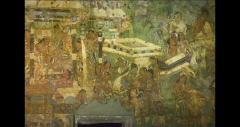
|
Siddhartha’slife as King Janaka,detail from Cave 1, Ajanta, India, late fifth century, dry fresco |
|

|
Bodhisattva Avalokiteshvaraholding a lotus, Cave 1, Ajanta, Maharashtra Province, India, late fifth century |
|
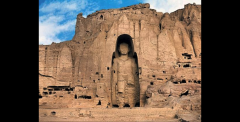
|
Bamiyan Buddhas created mid 6th to early 7th centurylocated in what is present-day Afghanistan |
|
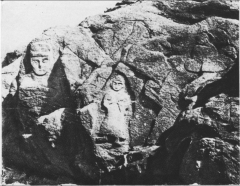
|
Buddha and other figures, Mount Kongwang,Jiangsu Province, China, second to third century CE |
|
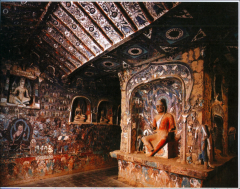
|
Cave 254 at Mogao,Dunhuang,Gansu Province, late fifth century (N. Wei period), China |
|

|
Colossal Buddha, Cave 20, Yungang,Datong, (N. Wei capital Pingcheng),Shanxi Province, China, c. 460-480, over 40 feet tall |
|
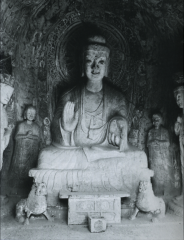
|
Buddha, BinyangChapel, Longmen,Luoyang, Northern Wei, c. 523 CE,20 feet tall |
|
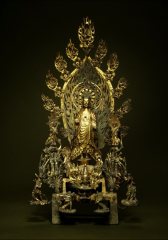
|
Buddha Maitreya,HebeiProvince, China, dated 524, gilt bronze, 30”highapsara |
|
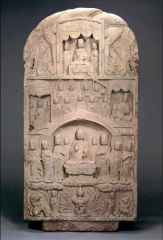
|
Stelecommissioned by Zhang Danguiand others, China, Northern Qi period, dated 557, limestone 42”tall |
|
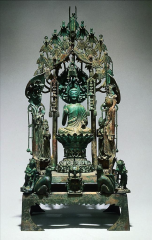
|
Buddha Amitabha,Zhaozhou,HebeiProvince, China, dated 593, lost wax cast bronze with inscription, 13 incheshigh |
|
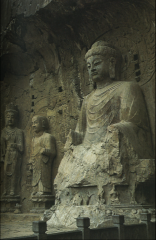
|
Buddha Vairocana,Cave 1280, Longmen, Luoyang, Henan Province, Tang Dynasty, ca. 675 695, limestone, 56 feet high |
|
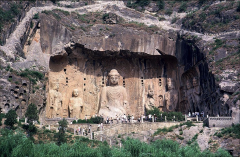
|
Guardians of the North Wall |
|
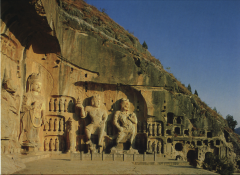
|
Outermost guardian is a dvarapalas,protector of entrywaysInnermost is a lokapalasor heavenly king (tianwang),based on yakshasof early IndiaPagoda holding guardian (heavenly king) is Pishamen,protector of north |
|
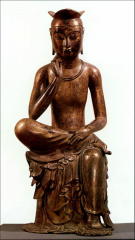
|
A Pensive Bodhisattva, probably Maitreya, Korea, Silladuring the Three Kingdoms period, early 7th c. CE, gilt-bronze, 37 inchestallFlower boys - Silla |
|
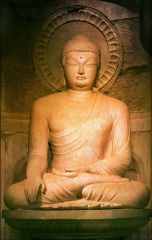
|
Seated Buddha at Seokguram(Sokkuram), granite, ca. 751, Unified Sillaperiod, height 11’2”Based upon our reading assignment for today, describe the architecture andsymbolic program of Sokkuram. |
|
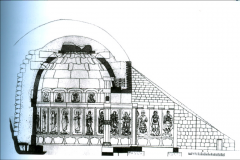
|
Elevation of Seogkuram(Sokkuram),North KyongsangProvince, Korea, United SillaPeriod, second half of the eight century, Commissioned by Kim Daeseong,member of King Gyeongdoek’scourtIn honor of those who were his parents in previous lifetimes. |
|

|
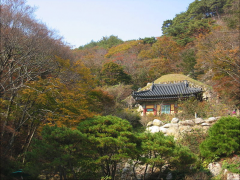
|
|
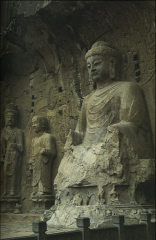
|
Buddha Vairocana,Cave 1280, FengxianTemple, Longmen,Henan Province, Tang Dynasty, ca. 675-695, limestone, 56 feet highEmpress Wuruled 690-705 |
|
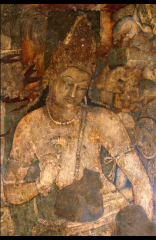
|
Bodhisattva Avalokiteshvaraholding a lotus, Cave 1, Ajanta, Maharashtra Province, India, late fifth century
|
|
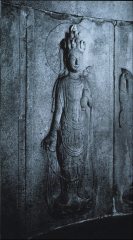
|
Bodhisattva Avalokiteshvara(Guanyin)with Eleven Heads, back wall, Sokkuram,Korea,
United SillaPeriod, second half of eighth century |
|
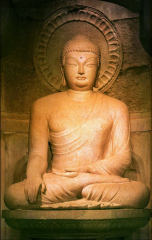
|
Seated Buddha at Seokguram(Sokkuram), granite, ca. 751, Unified Sillaperiod, height 11’2” |
|
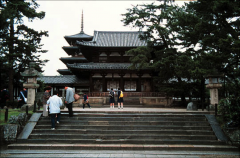
|
Horyuji(Monastery of Flourishing Law) Central Gate, destroyed by fire in 670, rebuiltin 711, south of the city of Nara, built for Prince Shotoku |
|

|
Pagoda,Horyuji,7th century |
|
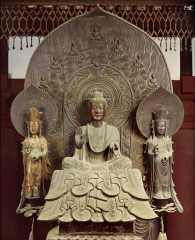
|
Tori Busshi,ShakaTriad, in the Main Hall (Golden Hall), Horyuji,dated 623, gilt bronze, height 46 inchesCommissionedby Empress Suikobecause of deathof two court ladiesand illness of Prince ShotokuDedicated to Shotokuand his consort after their deaths in 622 |
|
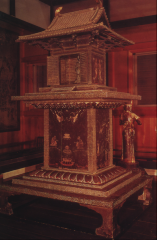
|
TamamushiShrine, HoryujiTreasure House, c. 650, cypress and camphor wood, with lacquer, 84 inches high |
|

|
Vyaghrijataka,detail of TamamushiShrine, HoryujiTreasurHouse, c. 650, lacquer on wood, with open metalwork borders |
|
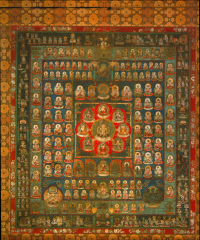
|
Womb World Mandala, early Heian period,Japan, second half of the ninth century, hanging scroll, color on silk, 72 x60”Depicts the phenomenal appearance of variousaspects of BuddhanatureIn the center is Vairocana(Dainichiin Japanese) |
|
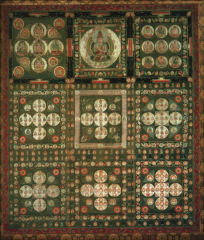
|
Diamond World Mandala, early HeianPeriod, second half of the ninth century, hanging scroll, color on silk, 72 x60” Depicts Vairocanaas the central transcendental Buddha and places him in relation to various phenomenal Buddhaswho have appeared in different times and places |
|
|
Aniconic/Iconic |
The earliest phase of Buddhist art, lasting until the 1st century CE, has been described as aniconic; the Buddha was only represented through symbols such as an empty throne, Bodhi tree, a riderless horse with a parasol floating above an empty space (at Sanchi), Buddha's footprints, and the dharma wheel/Anthropomorphic representations of the Buddha started to emerge from the 1st century CE in Northern India. The two main centers of creation have been identified as Gandhara in today’s North West Frontier Province, in Pakistan, and the region of Mathura, in central northern India. |
|
|
Axis Mundi |
Ashoka's pillar symbolized the axis mundi (the axis on which the world spins), where heaven connects with the earth |
|
|
Ashoka |
Ashoka (r.269-232 BCE) powerful third ruler of the Mauryandynasty (323-185 BCE), adopted and promoted Buddhism through pilgrimage sites, Missionaries, & Fourteen edicts |
|
|
Pilgrimage Sites: Lumbini, Bodh Gaya, Sarnath, kushinagara |
Lumbini,Nepal - birthBodhgaya, India - enlightenmentSarnath,India - first sermonKushinagar,India - death |
|
|
Kushinagara |
the town where Buddha Shakyamuni passed into parinirvana- 'final nirvana'. The final passing beyond suffering manifested by buddhas and highly realized masters at the end of their lives. |
|
|
Jataka |
Stories of Buddha's past lives |
|
|
Four Noble Truths |
1. Existence is fundamentally painful, 2. this pain is the result of desire (or thirst) for things and states of beings, 3. this pain can be relieved, and 4. an Eightfold Path of practice and understanding is the cure. |
|
|
Bahkti |
Bhakti (called Bhatti in Pali) has been a common practice in Theravada Buddhism, where offerings and group prayers are made to Buddhist icons and particularly images of Buddha. |
|
|
Mahayana Buddhism |
the "Great Vehicle", celebrates Shakyamuni as one of several transcendent buddhas and advocate the pursuit of enlightenment for the benefit of others, emphasizes meditation, has a strong visual component that stresses the ability to see buddhas and other divinities as a result of such practices, Bodhisattvas!! |
|
|
Shakyamuni |
Siddhartha Guatama (563 BCE- 483 BCE) teaching's founded Buddhism, born in Lumbini, Nepal, and died in Kushinagar, India. He taught 4 noble truths, achieved enlightenment, etc. |
|
|
Silk Road |
network of trade routes through Asia, spread Buddhism, The transmission of Buddhism to China via the Silk Road began in the 1st century CE, During this period Buddhism began to spread throughout Southeast, East, and Central Asia.Mahayana, Theravada, and Tibetan Buddhism are the three primary forms of Buddhism that spread, through the Silk Road, across Asia. |
|
|
Ushnisha |
a three-dimensional oval at the top of the head of the Buddha, conical form at the top of his head |
|
|
Urna |
a spiral or circular dot placed on the forehead of Buddhist images as an auspicious mark, symbolizes a third eye, vision into the divine world; a sort of ability to see past our mundane universe of suffering. The ūrṇā is the thirty-first physical characteristic of Buddha. It is generally thought to be a whorl of hair and be a mark or sign of the Buddha as a great being. The device is often seen on sculptures from the 2nd century CE. Sometimes represented with a jewel and frequently said to symbolize wisdom. |
|
|
Abhaya Mudra |

gesture of fearlessness, reassurance and safety, which dispels fear and accords divine protection and bliss. In the art of Gandhara, it is present when showing the action of preaching. It was also used in China during the Northern Wei and Sui eras of the 4th and 7th centuries, The gesture was used by Gautama Buddha when attacked by an elephant, subduing it as shown in several frescos and scripts. In Mahayana Buddhism, deities often paired it with another mudrā using the other hand. |
|
|
Maitreya |
A bodhisattva in this world era and will be the teaching buddha of the next world age, resides in Tushita heaven |
|
|
Tushita Heaven |
Part of Buddhist cosmos, where Maitreya resides while awaiting his final birth during which he will become enlightened |
|
|
Gupta Dynasty |
319-500, one of prosperity and patronage of the arts, Sanksrit became the state language, and poetry and other literary arts thrived |
|
|
Amitabha Buddha |
A celestial buddha in Mahāyāna Buddhism. Amitābha is the principal buddha in Pure Land Buddhism, a branch of East Asian Buddhism. He is the Buddha of the WESTERN Land of Ultimate Bliss, Amitābha possesses infinite merits resulting from good deeds over countless past lives as a bodhisattva named Dharmakāra. |
|
|
Lotus Sutra |
One of the most influential texts in the Mahayana tradition: 1. Attaining the awakened mind of a Buddha is the practitioner's primary goal and 2. enlightened beings should remain in the world to help others |
|
|
Avalokiteshvara/Guanyin/Kannon |
Bodhisattva who embodies compassion for all beings, In Chinese Buddhism, Avalokiteśvara has become the somewhat different female figure Guanyin. In Cambodia, he appears as Lokeśvara. Manifestations: 11-faced, thousand-armed, etc |
|
|
Northern Wei Dynasty |
Ruled northern China from 386 to 534 |
|
|
Pure Land |
A paradisiacal realm created and maintained by a buddha or other awakened being. |
|
|
Iconoclasm |
Iconoclasm is the destruction of religious icons and other images or monuments for religious or political motives, ex: a number of anti-Buddhist campaigns in Chinese history, and temples and Buddhist images were destroyed. One of the most notable of these campaigns is the Great Anti-Buddhist Persecution of the Tang dynasty. |
|
|
Empress Wu |
ruled unofficially as Empress and later, officially as Emperor of China (皇帝) during the brief Zhou dynasty (周, 684-705),[10] which interrupted the Tang dynasty (618–690 & 705–907), expanded Chinese empire, allied w/ silla, then later against silla, patron/donor of Longmen Grottoes |
|
|
Vairocana Buddha |
Cosmic/ Universal Buddha, Mahayana |
|
|
Prince Shotoku |
a politician of the Asuka period in Japan who served under Empress Suiko |
|
|
Saicho |
Considered the founder of the Tendai (Chinese Tiantai) sect in Japan, visited China to search for Lotus Sutra materials and then returned to Japan to perform esoteric rituals for the emperor and the court |
|
|
Kukai |
self-ordained monk, primarily interested in esoteric practices, and lived in the mountains, studying texts and chanting mantras, before traveling to China |

